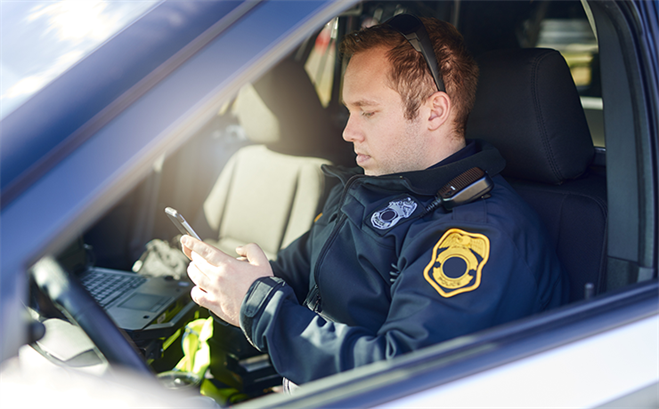2 Key Future Law Enforcement Themes
February 07, 2022 by Meredith Trimble

Like many government agencies, police departments are increasingly asked to do more with less. Internal and external stakeholders are seeking greater transparency just as departments are facing staffing shortages. Required reports demand deeper dives into more data. And, with mobile devices in their pockets, residents expect answers and action with just the click of a button.
Combined, these factors are accelerating the evolution of police departments such that the future of law enforcement will be:
- Data-driven
- Mobile
In fact, mobile tools and paperless processes are already setting the stage for more collaborative, digital approaches that will enable officers to spend more — and more productive — time in communities.
Reinventing Reports
A new eBook from Police1, “The Future of Law Enforcement is Data-Driven and Mobile,” states, “writing reports takes a lot of time — time that could otherwise be spent in the field, combating crime and keeping the public safe.” The publication cites a 2019 study that indicated 56% of officers surveyed spent three or more hours per shift on reporting. Seventy-one percent spent an hour or more completing incident reports in their patrol cars. That number is trending even higher today.
With new reporting standards and initiatives such as the FBI’s National Incident-Based Reporting System, reporting capabilities today need to streamline the collection of data, connect to analytics for meaningful insight, and mirror the way officers actually work. Key ingredients of software that can drive operational efficiency and enhance performance include:
- Connections with CAD and RMS to save time and ensure accuracy
- Flexibility to customize fields based on a situation
- Functionality to start and finish reports from multiple different devices
- Seamless connections to data analytics tools for real-time insights
- Opportunities for all officers involved in an incident to collaborate in one report
- Intuitive user experience
- Fully mobile functionality that engages officers from anywhere, including the field
Tactical Awareness
An important byproduct of the above is access to mission-critical information from any location. This significantly improves tactical awareness and officer safety. The police department in Clovis, California, provides a good example of how this succeeds in practice. The short-staffed department aimed to work smarter by investing in mobile technologies including an app that connects patrol officers, dispatchers, and command staff.
Because the app ties to GPS coordinates from any mobile device, dispatch can see where a patrol car and officers themselves are at any time, an important consideration for officers who leave the car to pursue a suspect on foot. Command staff can also monitor activity from any device. Detectives and others not at their MDT’s can also self-dispatch. “If something big happens in Clovis, all the detectives run out of their workspace, throw on their vest, and go, and we can see them on the map where we never were able to before,” noted Lt. James Munro in the eBook. “That’s been huge.”
Efficiency and Community
For officers in Springfield, Illinois, less time spent on manual reporting means more time out in the community. Using mobile electronic citation software allows officers to boost efficiency and improve accuracy in processing citations, collecting traffic stop data, and pulling crash report data for state reporting requirements.
Electronic citations also improve officer safety by expediting the ticketing process, reducing time on the side of the road. As soon as an officer initiates a stop, the technology can automate the process by pulling data from a driver’s license, VIN, and registration. That data auto-populates the citation form with information from agency’s CAD or records management system. Officers can then have the driver sign the citation on a mobile device and print a copy on the spot. At the same time, the citation can be digitally transferred to the court system.
Solutions that reduce paperwork give back time to officers, who can use it to increase productive community presence. “In this day and age of policing, it’s important officers use their time and resources effectively and efficiently,” said Assistant Chief Ken Scarlette in the Police1 piece.
The mobile office, combined with the need for increased transparency and deeper dives into more data, requires tools that create efficiencies and improve operations. These tools provide the foundation for a data-driven and mobile public safety future.